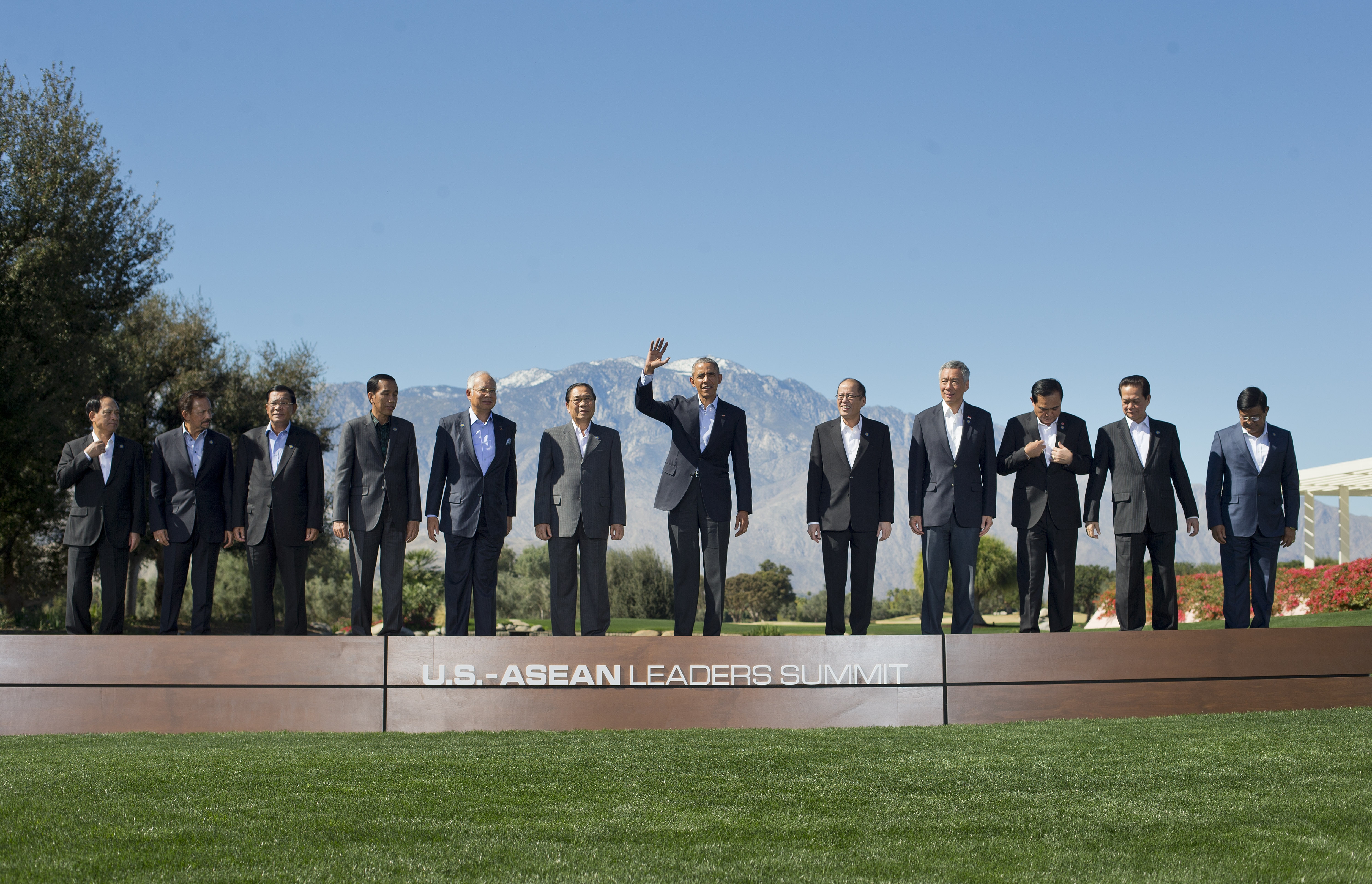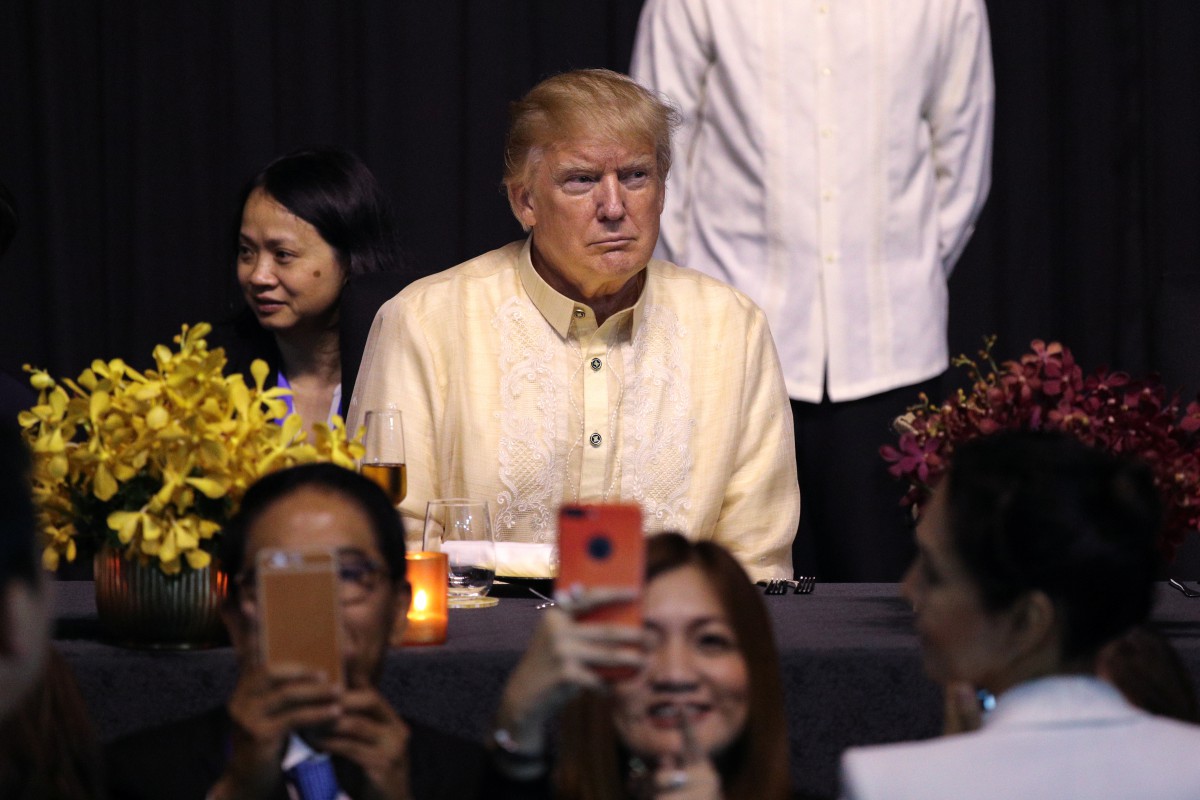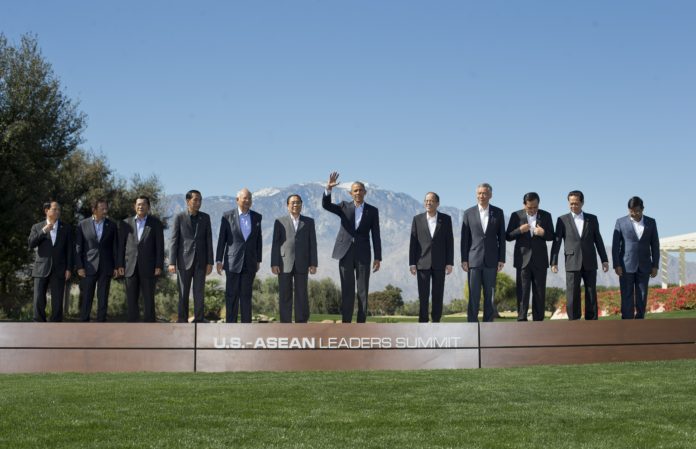AS recently as just two years ago, whether the Association of Southeast Asian Nations (Asean) is better off without the attention of the United States is not a question you would ever hear asked.
While it’s hard to believe this being the case in the long run – the relationship between Asean and America has undoubtedly been a lucrative and beneficial one – experts at the SCMP China Conference in Kuala Lumpur, are pondering if this might be for the best in the short-term.
It won’t have escaped anyone’s attention that the White House has gone through a dramatic shift in the last two years. Times have changed since former-president Barack Obama’s “Pivot to Asia.”
The new administration has adopted a somewhat different style. Rather than playing “a larger, more comprehensive role,” as Obama vowed, they have taken a more hands-off approach.

President Barack Obama, center, waves as he poses for a group photo with the leaders of ASEAN, the 10-nation Association of Southeast Asian Nations, at the Annenberg Retreat at Sunnylands in Rancho Mirage, California. Source: AP
Trump pulled out of the Trans-Pacific Partnership, which included key Southeast Asian countries, as the first order of business when he took office.
While Obama made a point of attending the annual Asean Summit, Trump only dropped in for the gala dinner last year and didn’t stay for the whole event.
This year, he has snubbed both the Asean and the East Asian Summits entirely, instead choosing to visit Europe where the US has “deep and historic ties.”
While countries in the region are “disappointed” by Trump’s lack of interest, the US president’s lack of attention to Asean “during this presidency, may not be a bad thing,” Dr Tang Siew Mun, Head of ASEAN Studies Centre at the ISEAS-Yusof Ishak Institute, told the audience.
SEE ALSO: US will lose the trade war – but the whole world will suffer
“Any country the Trump administration zooms in on is a target, bad things will happen; sanctions, trade tariffs, tweets, and so on. No news is good news.”
And he’s not wrong. Any country that’s fallen into Trump’s line of sight has generally come out of it worse off. China is a prime example, as they now face tariffs on over US$200 billion worth of their exports and threats of more if they don’t concede to US demands.
Sanctions on Iran are to be restored after Trump withdrew from the JCPOA, and the country is fighting to secure trade deals with other countries after Trump threatened to sever business ties if they maintained links.
Even neighbours Mexico and Canada have come under fire for “taking advantage” of America’s niceness and been forced to renegotiate trade agreements.

U.S. President Donald Trump looks on during the gala dinner marking ASEAN’s 50th anniversary in Manila, Philippines, November 12, 2017. Source: Reuters/Athit Perawongmetha
It’s possible that any focus paid to Asean could backfire in a similar way, which is risky for a region that heavily relies on trade.
In April, newly appointed Deputy US Trade Representative for Asia, Jeffrey Gerrish, said the US trade relations with Asean needed “rebalancing,” citing a collective US$92 billion trade deficit.
This supposed “key priority” seems to have fallen by the wayside as more pressing global issues came to the fore, but his admission acts as a warning to Asean that too much attention is not necessarily a good thing.
“When it comes to getting attention, there’s a sweet spot…not too much, not too little,” explains Shahriman Lockman, Senior Analyst at the Institute of Strategic and International Studies Malaysia.
“For Malaysia, not being an ally of the United States is a pretty good thing right now because we don’t get the attention from the White House. Our file doesn’t go to the White House, it goes to the Pacific Command, the State Department. The professionals run the relationship and it’s predictable.”
SEE ALSO: US-China Trade: Are we heading for the next cold war?
And it is precisely Trump’s unpredictability that has caused many leaders to breathe a sigh of relief that it will be Vice President Mike Pence attending next month’s summits as opposed to his boss.
Lockman questions the value of Trump’s unwieldy countenance at the leader led events, saying you “don’t necessarily want a man like Trump in the room.”
But while Pence may be more reliable, his presence is another reminder, not only of America’s waning interest but of its waning power in the region.
As Tang points out, “US supremacy is a thing of the past.”
America is a big factor in the region, but it is far from the only factor. China is gaining traction, pouring money into Asean and supplying the majority of tourists to the region. And the largest investor of Foreign Direct Investment (FDI) is the European Union, Tang said.

Protesters gather around a large homemade U.S. flag during a rally against U.S. President Donald Trump’s visit in Manila, Philippines November 14, 2017. Source: Reuters/Athit Perawongmetha
“There are many other players in the region. There’s no one single actor,” he said.
“You see multiple leaderships in multiple different areas. There’s no one single party that stands out.”
But this is changing. As the US retreats, China asserts its dominance.
Responses to a survey conducted among policymakers in the region reflect this, Tang said.
“When asked, the strongest power in the region now? – China. The strongest power in 10 years’ time? – China.”





